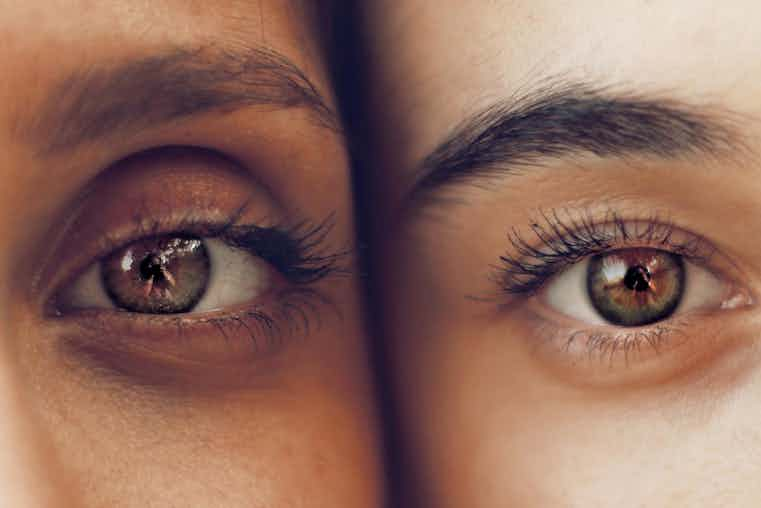There is some debate about the rarest eye color in the world, with many reports declaring green eyes the rarest, with 2% of the world's population having green eyes and 9% of Americans. However, according to a 2014 American Association of Ophthalmology (AAO) study, 1% of Americans have an eye color not listed in the survey.
Whether you're looking for the latest vitamins and supplements, want to stock up on over the counter medication, or are looking for a digital solution for your regular prescription, our providers have you covered. Compare brands below and click on your favourite to shop their best offers now!
Eyes can come in many colors, not just with colorful contact lenses. However, there haven't been many extensive studies that accurately examine different eye colors and how common or rare they might be across different populations or the world overall. There are also many hues, and eyes can appear differently in different lighting, so is there such a thing as hazel, amber or black eyes, or do they all come under the umbrella of brown eyes? When studying eyes worldwide, these questions mean there isn't much conclusive data.
Also, some studies don't include eye colors as they can be caused by an illness that may not be considered natural. That's why green is often given as the answer to the rarest eye color, when in fact, violet or red eyes are the rarest eye colors in the world and are often associated with albinism.
What are the five rarest eye colors?
A 2014 study by the AAO gives the following statistics:
- Other - 1%
- Green - 9%
- Hazel - 18%
- Blue - 27%
- Brown - 45%
Although researchers conducted the study in the USA, the results reflect our understanding of the prevalence of eye colors worldwide. Brown eyes are the most common, with green being the least common, except for eyes of different hues or that are caused by a medical condition. Although this changes from country to country, for example, blue eyes are widespread in Scandinavian countries, and brown eyes are most common across Asia.
Since 2010, scientists have believed that potentially 16 genes affect our eye color, with OCA2 and HERC2 having the most influence. But why do we have different eye colors, and what do the colors tell us? Let's look at each color individually.
Green - 9%
To understand why some people have green eyes, you must understand a certain amount of the science of light and the spectrum of color, as people's eyes aren't really green. The small amount of melanin in the iris of "green" eyes creates an illusion known as the Rayleigh scattering effect, which scatters the light across the eye rather than absorbing it, making the brownish-bluish eyes appear green.
Although only 9% of Americans have green eyes, it's much more common in women and Celtic and Germanic parts of Europe, particularly Ireland and Scotland.
Hazel - 18%
Hazel eyes have the same amount of melanin as brown eyes, so these two colors are often grouped in eye color studies. The difference is that hazel eyes have more melanin concentrated on the edge of the iris rather than the center, creating a lighter appearance.
Blue - 27%
Blue eyes have significantly less melanin than brown or hazel eyes, which causes them to be lighter in appearance; however, they still contain some melanin. The melanin of blue eyes is on the back of the iris. This means that the light doesn't reflect from blood vessels as it might in someone with albinism, but it also doesn't give the iris brown color due to the absence of melanin on the front of the iris. The AAO believes that blue eyes only came into existence 10,000 years ago as a genetic mutation but have been passed down due to their attractive appearance, meaning everyone with blue eyes has a common ancestor.
Gray eyes are also usually linked with blue eyes in scientific studies, so it's unclear how rare gray eyes are in society. Sometimes gray eyes can be bluish and appear gray in a particular light, but in some cases, there is more collagen in the stroma - the front of the iris - which can create a gray effect.
Brown - 45%
Almost half of the Americans in the AAO study have brown eyes, while 70 to 80% of the global population have brown eyes, making it the most common eye color in the world. Since humans likely originate from Southern Africa, it's no wonder that the most common eye color in the world is brown and that until 10,000 years ago, everyone probably had brown eyes.
Brown eyes are caused by the melanin on the front of the iris, or stroma, which absorbs the light rather than reflecting it, giving the appearance of brown eyes. Amber eyes have similar pigments, yet the light reflection gives them an amber or golden hue. As melanin levels vary across populations, brown pigment varies, with dark eyes prevalent in Africa and East Asia and lighter brown eyes appearing more in Europe and the Americas.
Other - 1%
It's not 100% clear what colors are included in the "other section." However, less than 1% of Americans have violet or red eyes. These rare eye colors are caused by a lack of pigment in the iris, making the light reflect off the blood vessels in the eye rather than the melanin in the back of the iris or stroma. This is associated with albinism due to the lack of melanin in people with the condition; however, not everyone with albinism will have red eyes - sometimes their eyes will appear to be light blue, violet, red or pink, depending on the amount of melanin in their iris.
What do changes in eye color mean?
Our eyes are poetically titled the "windows of the soul" and play an essential part in our interactions. It isn't easy to have a conversation without making eye contact with someone, and sincere conversations sometimes require unwavering eye contact to feel honesty and integrity between speakers. So why can it be difficult to remember someone's eye color? Would we notice if their eye color changed?
Eye color can change across someone's lifetime, not just because of the colors of their surroundings, the level of light causing a different appearance, or the use of colored contact lenses. Newborn babies usually lack pigment in their eyes, so they appear very blue initially. However, this changes over the first few months as babies produce more melanin in their hair, skin, and eyes. The Rayleigh scattering effect means that green and hazel eyes seem to change more as different lighting can reflect differences in the iris, causing the color to vary. For some people, their eye color changes over time. But this needn't always be a cause for concern.
Eyes change naturally and can be a symptom of aging or changes taking place within the eye itself, but in some cases, changes in eye color can be a sign that a condition has developed and should be checked by a health professional.
Eye conditions
Several eye conditions can change the eyes' appearance, and they should be treated as soon as changes are noticed.
Cataracts
The lens is part of the eye that enables us to see. Cataracts develop because the proteins in this lens have broken down, causing a person's vision to become cloudy, blurry, or dulled. It's a natural part of aging, usually beginning at 40. However, genetics, sports injuries, sunlight, and other medical conditions, such as diabetes, can influence the development of cataracts. When a person develops cataracts, their lens becomes cloudy, causing the eye to appear whitish-gray.
Fortunately, not all cataracts need to be treated. When found early, those that do can be treated easily by replacing the lens in your eye, known as an Intraocular Lens Implant (IOL). Sometimes, after this procedure, a bluish ring appears around the pupil when the pupil dilates, causing it to appear a different color, especially in very dark brown eyes. This is just the lens and isn't anything to worry about.
Arcus senilis
Also known as corneal arcus, this is a condition that some people develop in older age or if they have high levels of cholesterol. It's a build-up of fat, or lipid deposits, in the eye, which causes a grayish-blue or white ring around the cornea.
Uveitis
Coming from Greek to mean inflammation of the eye, uveitis can be caused by infections, injury, or foreign bodies in or on the eye. It causes the white of the eye to turn red and can be incredibly irritating or painful, so a doctor should treat it as soon as discomfort first arises.
Heterochromia
Heterochromia causes each eye to be a different color due to the differing pigmentation in each eye and rarely poses a problem for people. Different colored eyes can, however, be an effect of injury, surgery, medication, or an underlying condition, so if it develops later in life, it should be checked by a medical professional.
Although rare and usually harmless, heterochromia can be caused by glaucoma, diabetes, piebaldism, or vitiligo, which can affect melanin production, and thus should be monitored to prevent any condition from worsening.
Heterochromia is also often mistaken with anisocoria, as with legendary singer David Bowie, as anisocoria causes an eye to appear darker than the other due to the permanent dilation of the pupil. Head trauma, direct eye trauma, or certain medicines can cause this illness which may hinder visibility, so you should bring any undue changes to pupil size to a doctor's attention.
Hyphema
Hyphema is the appearance of blood in the eye, sometimes obscuring sight, which is most often caused by injury to the eye. If no damage has occurred, but blood is visible in the eye, it can be caused by several serious conditions. Still, if any blood is seen in the eye, whether caused by an injury or not, it should be treated by a doctor or ophthalmologist as soon as possible.
Iris nevus
Just as freckles appear on our skin after spending too much time in the sun, brown freckle-like specks can appear on our irises too. It's usually nothing to worry about. However, in rare cases, these freckles can be cancerous. If you notice marks appear in your or someone else's eyes, you should contact a doctor.
Looking after your eye health
Eyes can appear in many colors and hues and even change over time, after injuries, due to specific conditions, or simply with age. Having a particular eye color has not yet been proven to be linked to specific medical conditions, so be mindful of any information telling you otherwise. However, if you notice changes in the appearance of your eye, develop pain or have an uncomfortable sensation in your eye, you should contact a medical professional. Even if it's nothing, reassurance is just as valuable as medical assistance.
Even before your eyes or vision begin to change, you should take care of your eyes by wearing sunglasses with UV protection and visiting an eye doctor regularly for check-ups.









